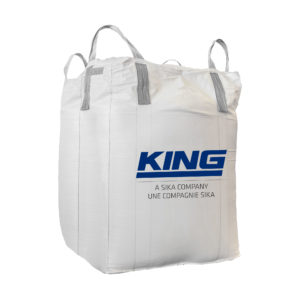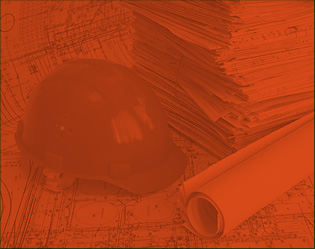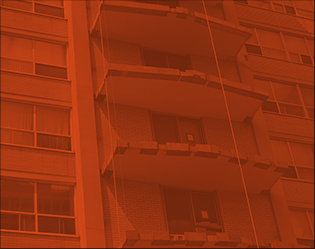Underground Shotcrete Quality Assessment
MS-D3 UG
• Rapid early age strength development.
• Improved performance in presence of running water.
• Improved adhesive and cohesive plastic properties.
During the 1990s, the use of dry-mix shotcrete as a tool for ground support became much more prevalent in Canadian hardrock mines. With this increase in dry-mix shotcrete use came the need to develop a practical and accurate method for determining the quality of the in-place shotcrete. This report summarizes the results of a study undertaken to provide the basis of an underground shotcrete quality assessment program for hardrock mines.
The first step in the study was to review several test methods, all of which could potentially be used for the underground determination of shotcrete compressive strength. These tests—the Schmidt Hammer (SH) and the Windsor Probe (WP)—were evaluated along with the point loadindex (PLI) test, that had already been used underground in several mines.
An evaluation of the precision of these three tests was undertaken in the laboratory and showed that the SH was more suitable than the WP and PLI methods to evaluate the compressive strength of drymix shotcrete. Some SH testing was then carried out in a mine to evaluate the suitability of this method for use in the underground environment. A procedure was then proposed for continuous routine checking of underground shotcrete quality. This procedure involved extensive use of the SH to rapidly identify any potential poor quality shotcrete.
Test Method Selection
Several criteria were evaluated to determine which testing procedure was most appropriate for the determination of shotcrete compressive strength in an underground environment. These criteria were separated into three categories: precision (including repeatability and meaningfulness), ease of execution, and cost.
According to these considerations, the ideal test should:
• provide a numerical value that needs no further treatment;
• produce easily reproducible results with little statistical variation (in-test precision);
• lead to accurate comparisons (good correlation) with the measured property;
• not be too sensitive (that is, a small change in measure does not lead to a large change in
estimating the property);
• minimize sampling operation and sample preparation;
• be quick and easy to realize; and
• minimize cost.
According to ACI 214-77 (Reapproved 1997) “Recommended Practice for Evaluation of Strength Test Results of Concrete,” the in-test variation can be evaluated by the coefficient of variation (COV). The coefficient of variation is defined as the standard deviation divided by the average of all tests performed on the same concrete, expressed as a percentage.
Because the main goal of this study was to design an effective, routine testing procedure that would be suitable for the underground environment (difficult access and limited facilities), the last three considerations listed above were weighted the most important.
Schmidt Hammer
The Schmidt Hammer (SH) measures the rebound of a hardened steel hammer that is impacted on the surface of the concrete with constant energy. The amount of rebound is proportional to the hardness of the impacted material. Although there is no theoretical relationship between the surface hardness and the compressive strength of the concrete, there is a strong experimental relationship. Because of its nondestructive characteristics, this test is an ideal method to determine the in-place quality of concrete or shotcrete.
The use of the SH is fast and inexpensive. Results from SH testing can, however, be affected by several factors, including the testing position (angle of the hammer with respect to vertical), type and amount of coarse aggregates, moisture content of the concrete, and surface condition of the tested area. Usually, the precision of the results varies between 15 to 25%. SH testing shouldalways be correlated with compressive strength of cylinders by using appropriate trial mixtures (cast with similar aggregate type and dosage) to obtain meaningful results. Refer to ASTM C 805 “Standard Test Method for Rebound Number of Hardened Concrete” for a full description of the testing procedure.
The Type N Schmidt Hammer presented in Fig. 1 is the standard hammer for testing normal concrete structures. It was determined to be the most suitable for testing the compressive strength of shotcrete.
|
Panel Position |
N-Hammer Reading |
||
|
Mean |
Standard Deviation |
COV, % |
|
|
Vertical |
25.6 |
2.97 |
11.6 |
|
Horizontal |
28.5 |
3.19 |
11.2 |
Some pretesting was conducted on large concrete panels about 28 x 28 x 4 in. (700 x 700 x 100 mm) and other tests were conducted on cast cylinders 4 x 8 in. (100 x 200 mm). Table 1 presentssome average test results obtained with the Type N hammer on panels in vertical (downward) and horizontal positions, respectively. These results (100 from tests in both positions) showed that, as expected, the readings are higher in the horizontal position. The horizontal position was adopted for the rest of the study to represent the testing that would most likely to be done in the mine (most tests would be done horizontally against vertical walls).
The initial tests on cylinders indicated that there is large variation in the results dispersion when the cylinders are not secured tightly. To avoid this dispersion in the test results, the cylinders were loaded in the compression press to about 15% of f ‘c prior to testing (to ensure good grip) as proposed by Carrette and Malhotra (1984). The testing procedure that was adopted for the second step of the project consisted of performing 20 horizontal SH tests on each cylinder.
Precision of Testing
To evaluate the precision of Type N Schmidt Hammer tests, several concrete mixtures of different strengths were cast in the laboratory. Concretes with compressive strengths ranging from 2470 to 14,070 psi (17 to 97 MPa) were used to evaluate the precision of the testing procedure. Thirty-six strength levels were obtained by changing the water cement ratio (the slump values were adjusted by adding more or less water-reducer or super plasticizer), and by changing the age at testing.
The compressive strengths were measured on 4 x 8 in. (100 x 200 mm) cylinders. For each mixture, five cylinders were tested according to ASTM C 39 “Standard Test Method to Determine Compressive Strength.” The results are presented in the first four columns of Table 2: the first column is the mixture identification, the second column is the average compressive strength measured on five cylinders, the third column gives the standard deviation, while the fourth column is the coefficient of variation. The last line of Table 2 also gives the average coefficient of variation for all compression tests (average COV = 2.36%). According to ACI 214, this indicates a very good control of the within-test variation.
Correlation of Schmidt Hammer
The last three columns of Table 2 present the results obtained with the Schmidt Hammer. Each result in Column 5 is the average of 100 tests performed on the cylinders used for the determination of the compressive strength (20 SH tests per cylinder). To represent the walls of the mine, these tests were performed horizontally (against a vertical surface). The average coefficient of variation (last line) is 8.86%. Because the COV is somewhat high, it takes several readings to get a good average measurement; a group of 20 readings can be considered as a good number for underground measurement.
Figure 2 presents the relationship between the average compressive strength (average of five cylinders) and the average measurement from the Schmidt Hammer (average of 100 readings). The coefficient of correlation between the Schmidt Hammer and the compressive strength is 0.963 for a linear relationship and 0.964 for a second-order relationship. Any relationship with a coefficient of correlation over 0.95 is usually acceptable. This means that the Schmidt Hammer provides a good indication of the shotcrete compressive strength. One must remember that because the testing position and condition of the surface are important factors, the relationship shown in Fig. 2 is, of course, only valid when the testing is performed in a horizontal position and on a smooth surface (ground or trowelled surface).
The low COV of the in-test variation (8.86% compared to the usual 10 to 20% in other studies) and the very good correlation obtained for the Schmidt Hammer readings in this study can most probably be explained by the low coarse aggregate content of the shotcrete and the good control achievable in a laboratory environment. It is important to remember that the type and content of coarse aggregate is one of the most important factors affecting Schmidt Hammer readings. Because of the low coarse aggregate content, these results are most probably applicable to any other shotcrete with similar low coarse aggregate content while tested horizontally on a smooth surface.
During the 1990s, the use of dry-mix shotcrete as a tool for ground support became much more prevalent in Canadian hardrock mines. With this increase in dry-mix shotcrete use came the need to develop a practical and accurate method for determining the quality of the in-place shotcrete. This report summarizes the results of a study undertaken to provide the basis of an underground shotcrete quality assessment program for hardrock mines.
The first step in the study was to review several test methods, all of which could potentially be
used for the underground determination of shotcrete compressive strength. These tests—the
Schmidt Hammer (SH) and the Windsor Probe (WP)—were evaluated along with the point load
index (PLI) test, that had already been used underground in several mines.
An evaluation of the precision of these three tests was undertaken in the laboratory and showed that the SH was more suitable than the WP and PLI methods to evaluate the compressive strength of drymix shotcrete. Some SH testing was then carried out in a mine to evaluate the suitability of this method for use in the underground environment. A procedure was then proposed for continuous routine checking of underground shotcrete quality. This procedure involved extensive use of the SH to rapidly identify any potential poor quality shotcrete.
Test Method Selection
Several criteria were evaluated to determine which testing procedure was most appropriate for
the determination of shotcrete compressive strength in an underground environment. These
criteria were separated into three categories: precision (including repeatability and
meaningfulness), ease of execution, and cost.
According to these considerations, the ideal test should:
• provide a numerical value that needs no further treatment;
• produce easily reproducible results with little statistical variation (in-test precision);
• lead to accurate comparisons (good correlation) with the measured property;
• not be too sensitive (that is, a small change in measure does not lead to a large change in
estimating the property);
• minimize sampling operation and sample preparation;
• be quick and easy to realize; and
• minimize cost.
According to ACI 214-77 (Reapproved 1997) “Recommended Practice for Evaluation of Strength Test Results of Concrete,” the in-test variation can be evaluated by the coefficient of variation (COV). The coefficient of variation is defined as the standard deviation divided by the average of all tests performed on the same concrete, expressed as a percentage.
Because the main goal of this study was to design an effective, routine testing procedure that
would be suitable for the underground environment (difficult access and limited facilities), the last three considerations listed above were weighted the most important.
Schmidt Hammer
The Schmidt Hammer (SH) measures the rebound of a hardened steel hammer that is impacted
on the surface of the concrete with constant energy. The amount of rebound is proportional to the hardness of the impacted material. Although there is no theoretical relationship between the surface hardness and the compressive strength of the concrete, there is a strong experimental relationship. Because of its nondestructive characteristics, this test is an ideal method to determine the in-place quality of concrete or shotcrete.
The use of the SH is fast and inexpensive. Results from SH testing can, however, be affected by several factors, including the testing position (angle of the hammer with respect to vertical), type and amount of coarse aggregates, moisture content of the concrete, and surface condition of the tested area. Usually, the precision of the results varies between 15 to 25%. SH testing shouldalways be correlated with compressive strength of cylinders by using appropriate trial mixtures (cast with similar aggregate type and dosage) to obtain meaningful results. Refer to ASTM C 805 “Standard Test Method for Rebound Number of Hardened Concrete” for a full description of the testing procedure.
The Type N Schmidt Hammer presented in Fig. 1 is the standard hammer for testing normal
concrete structures. It was determined to be the most suitable for testing the compressive
strength of shotcrete.
|
Panel Position |
N-Hammer Reading |
||
|
Mean |
Standard Deviation |
COV, % |
|
|
Vertical |
25.6 |
2.97 |
11.6 |
|
Horizontal |
28.5 |
3.19 |
11.2 |
Some pretesting was conducted on large concrete panels about 28 x 28 x 4 in. (700 x 700 x 100
mm) and other tests were conducted on cast cylinders 4 x 8 in. (100 x 200 mm). Table 1 presents
some average test results obtained with the Type N hammer on panels in vertical (downward)
and horizontal positions, respectively. These results (100 from tests in both positions) showed
that, as expected, the readings are higher in the horizontal position. The horizontal position was adopted for the rest of the study to represent the testing that would most likely to be done in the mine (most tests would be done horizontally against vertical walls).
The initial tests on cylinders indicated that there is large variation in the results dispersion when the cylinders are not secured tightly. To avoid this dispersion in the test results, the cylinders were loaded in the compression press to about 15% of f ′c prior to testing (to ensure good grip) as proposed by Carrette and Malhotra (1984). The testing procedure that was adopted for the second step of the project consisted of performing 20 horizontal SH tests on each cylinder.
Precision of Testing
To evaluate the precision of Type N Schmidt Hammer tests, several concrete mixtures of different strengths were cast in the laboratory. Concretes with compressive strengths ranging from 2470 to 14,070 psi (17 to 97 MPa) were used to evaluate the precision of the testing procedure. Thirty-six strength levels were obtained by changing the water cement ratio (the slump values were adjusted by adding more or less water-reducer or super plasticizer), and by changing the age at testing.
The compressive strengths were measured on 4 x 8 in. (100 x 200 mm) cylinders. For each
mixture, five cylinders were tested according to ASTM C 39 “Standard Test Method to Determine Compressive Strength.” The results are presented in the first four columns of Table 2: the first column is the mixture identification, the second column is the average compressive strength measured on five cylinders, the third column gives the standard deviation, while the fourth column is the coefficient of variation. The last line of Table 2 also gives the average coefficient of variation for all compression tests (average COV = 2.36%). According to ACI 214, this indicates a very good control of the within-test variation.
Correlation of Schmidt Hammer
The last three columns of Table 2 present the results obtained with the Schmidt Hammer. Each
result in Column 5 is the average of 100 tests performed on the cylinders used for the
determination of the compressive strength (20 SH tests per cylinder). To represent the walls of
the mine, these tests were performed horizontally (against a vertical surface). The average
coefficient of variation (last line) is 8.86%. Because the COV is somewhat high, it takes several
readings to get a good average measurement; a group of 20 readings can be considered as a
good number for underground measurement.
Figure 2 presents the relationship between the average compressive strength (average of five
cylinders) and the average measurement from the Schmidt Hammer (average of 100 readings).
The coefficient of correlation between the Schmidt Hammer and the compressive strength is
0.963 for a linear relationship and 0.964 for a second-order relationship. Any relationship with a
coefficient of correlation over 0.95 is usually acceptable. This means that the Schmidt Hammer
provides a good indication of the shotcrete compressive strength. One must remember that
because the testing position and condition of the surface are important factors, the relationship
shown in Fig. 2 is, of course, only valid when the testing is performed in a horizontal position and on a smooth surface (ground or trowelled surface).
The low COV of the in-test variation (8.86% compared to the usual 10 to 20% in other studies) and the very good correlation obtained for the Schmidt Hammer readings in this study can most probably be explained by the low coarse aggregate content of the shotcrete and the good control achievable in a laboratory environment. It is important to remember that the type and content of coarse aggregate is one of the most important factors affecting Schmidt Hammer readings. Because of the low coarse aggregate content, these results are most probably applicable to any other shotcrete with similar low coarse aggregate content while tested horizontally on a smooth surface.







